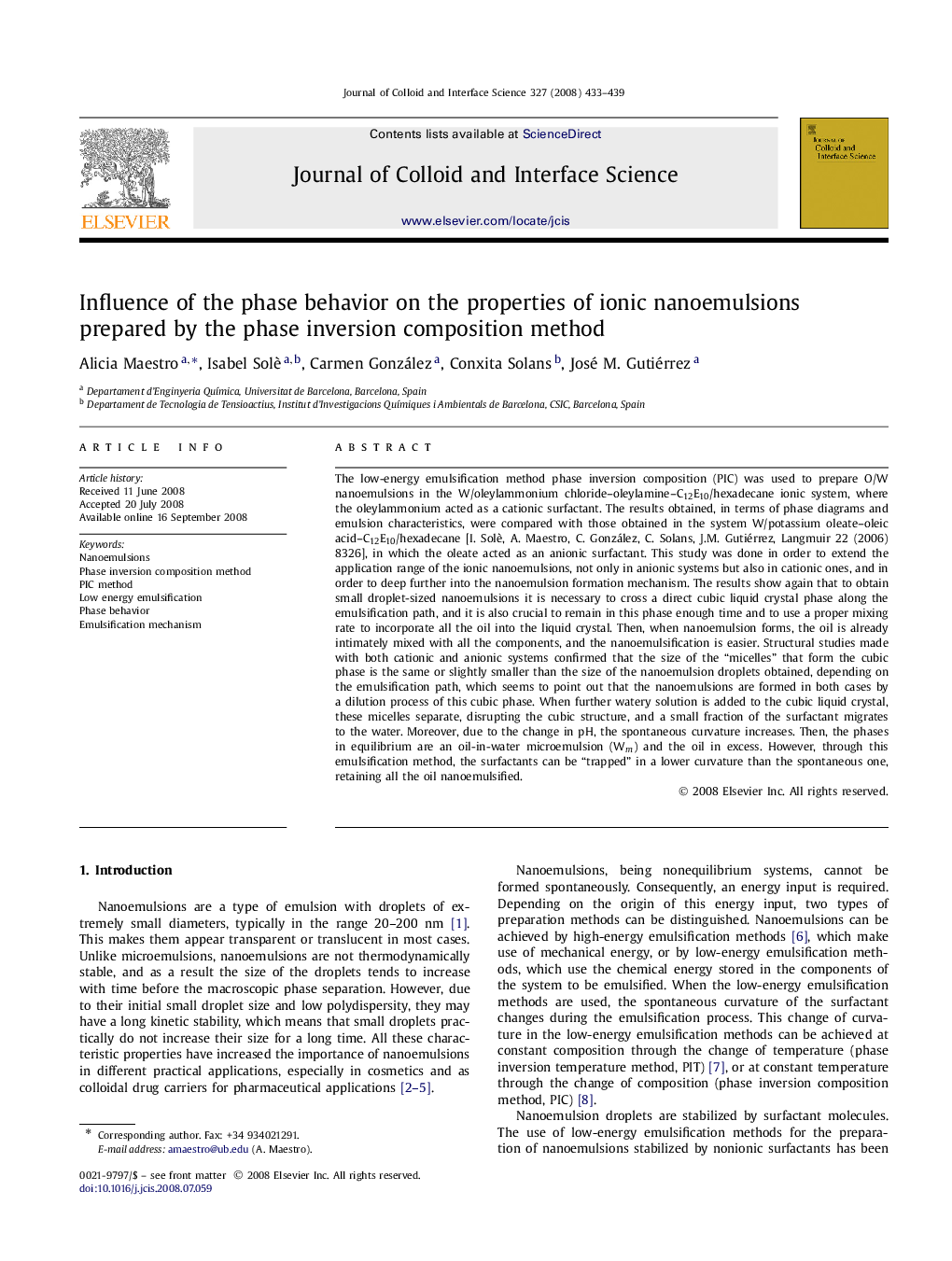| کد مقاله | کد نشریه | سال انتشار | مقاله انگلیسی | نسخه تمام متن |
|---|---|---|---|---|
| 610748 | 880657 | 2008 | 7 صفحه PDF | دانلود رایگان |

The low-energy emulsification method phase inversion composition (PIC) was used to prepare O/W nanoemulsions in the W/oleylammonium chloride–oleylamine–C12E10/hexadecane ionic system, where the oleylammonium acted as a cationic surfactant. The results obtained, in terms of phase diagrams and emulsion characteristics, were compared with those obtained in the system W/potassium oleate–oleic acid–C12E10/hexadecane [I. Solè, A. Maestro, C. González, C. Solans, J.M. Gutiérrez, Langmuir 22 (2006) 8326], in which the oleate acted as an anionic surfactant. This study was done in order to extend the application range of the ionic nanoemulsions, not only in anionic systems but also in cationic ones, and in order to deep further into the nanoemulsion formation mechanism. The results show again that to obtain small droplet-sized nanoemulsions it is necessary to cross a direct cubic liquid crystal phase along the emulsification path, and it is also crucial to remain in this phase enough time and to use a proper mixing rate to incorporate all the oil into the liquid crystal. Then, when nanoemulsion forms, the oil is already intimately mixed with all the components, and the nanoemulsification is easier. Structural studies made with both cationic and anionic systems confirmed that the size of the “micelles” that form the cubic phase is the same or slightly smaller than the size of the nanoemulsion droplets obtained, depending on the emulsification path, which seems to point out that the nanoemulsions are formed in both cases by a dilution process of this cubic phase. When further watery solution is added to the cubic liquid crystal, these micelles separate, disrupting the cubic structure, and a small fraction of the surfactant migrates to the water. Moreover, due to the change in pH, the spontaneous curvature increases. Then, the phases in equilibrium are an oil-in-water microemulsion (WmWm) and the oil in excess. However, through this emulsification method, the surfactants can be “trapped” in a lower curvature than the spontaneous one, retaining all the oil nanoemulsified.
The nanoemulsions formed by the PIC method have a droplet size similar to that of cubic liquid crystal micelles crossed during emulsification, indicating that they are formed through a dilution process.Figure optionsDownload as PowerPoint slide
Journal: Journal of Colloid and Interface Science - Volume 327, Issue 2, 15 November 2008, Pages 433–439